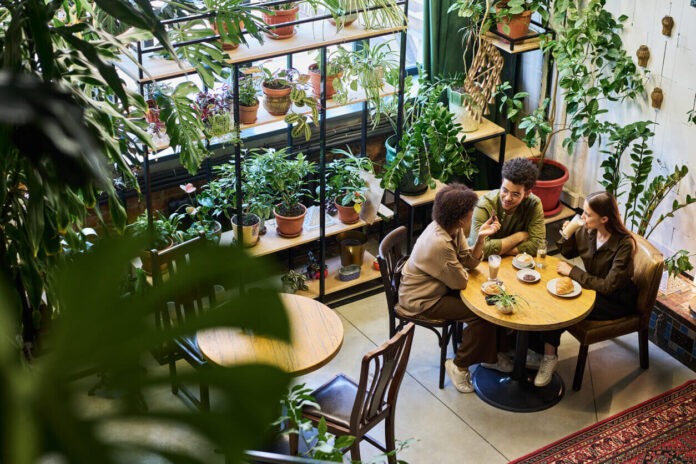Every little thing counts in the exciting world of hospitality when creating a great dining experience. Among these fundamental components, restaurant chairs are crucial since they offer comfort and help build the mood and design of the place. As we learn more about restaurant design, the selection of chairs may significantly impact the ambiance overall, reflecting different designs that appeal to different tastes and preferences.
The world of restaurant chairs is an intriguing and artistically varied environment. Restaurant chairs are essential in determining a restaurant’s entire atmosphere and eating experience, from historical designs that inspire nostalgia to avant-garde ones that pose challenges to conventional conceptions.
Classic Elegance
Classic elegance is one of the timeless fashions that has endured. The luxury of ancient times is evoked by the sophisticated aura that Victorian and antique chairs produce. These seats frequently feature intricate woodwork, sculpted accents, and sumptuous upholstery. Diners are transported to a different period by the nostalgic tones and opulent textiles like velvet. Restaurants that follow this trend try to create a posh ambiance where patrons are welcome to enjoy the romance of the past.
Rustic Charm
Recent years have seen a rise in demand for rustic charm due to its hospitable and welcoming appeal. Industrial and farmhouse designs honor natural materials, rough edges, and earthy hues. Industrial restaurant chairs have metal components, such as exposed bolts and worn patinas, whereas farmhouse chairs sometimes have faded wood finishes and straightforward, solid designs. These designs offer a warm, genuine atmosphere that reminds guests of rustic country life or renovated industrial places.
Minimalist Modern
Modern minimalist designs emphasize clean lines, efficiency, and simplicity compared to elaborate ones. Scandinavian chairs emphasize soft wood tones, subdued hues, and modest designs encouraging serenity. On the other hand, mid-century chairs display enduring styles from the middle of the 20th century that are distinguished by organic curves and avant-garde materials. Both designs have a modern flare that appeals to people who value a clean, uncomplicated eating space.
Eclectic Fusion
The diverse fusion style provides an engaging playground for people who enjoy the flexibility of creative expression. Bohemian chairs celebrate a variety of patterns, hues, and textures, which results in a lively and unorthodox environment. Mix-and-match chairs expand on this idea by combining various chair designs, materials, and hues in a single eating area. Thanks to this design, restaurants may display their wide range of influences and open-mindedness, which promotes originality and personal narrative.
Coastal Relaxation
Nautical and beach chairs breathe new life into restaurant design by drawing inspiration from the serene serenity of the seaside. Navy blue and white color schemes and rope and sailcloth accents are frequent elements of nautical fashion. Beach chairs have light, breezy styles with pastel colors and organic materials like rattan and wicker. These designs foster a carefree, vacation-like environment for casual restaurants or seaside dining.
Contemporary Chic
In the world of high-end dining, modern chic designs are prominent. High-end chairs have opulent components like leather, velvet, and shiny metals. The designs are elegant, frequently including distinctive forms and fine artistry. Bold colors, asymmetrical designs, and cutting-edge materials are used in avant-garde chairs to push the envelope and make a strong statement about innovation and refinement. Restaurants are redefining these eating experiences to create a lasting impact on their patrons.
Outdoor And Casual
Chairs made of rattan and wicker are popular for outdoor sitting because they are lightweight and robust and provide outdoor dining rooms a relaxed atmosphere. Folding bistro chairs are perfect for outdoor eating areas since they are lightweight and convenient to store. Cafés inspired them in Paris.
Luxuries And Opulent
When coupled with beautiful designs, velvet gives a sense of elegance and refinement and makes for an opulent eating experience. Ornate Carved Chairs: Often found in upmarket and formal dining settings, these chairs have elaborate woodwork and carvings. High-Back Chairs: The luxury and comfort of a chair with a high backrest and soft fabric is conjured up.
Artistic
Embroidered Chairs These chairs provide a splash of color and character by combining various materials and patterns to produce a vivid and eclectic aesthetic. Chairs that are also works of art, with distinctive forms and patterns that defy conventional chair design, are known as sculptural chairs. Bespoke upholstery: Restaurants typically pick bespoke upholstery to match their themes and color schemes, creating distinctive chairs that embody the company’s essence.
Modern
Charles and Ray Eames are the designers of the Eames chairs, which are renowned for their streamlined, plywood or molded plastic shells and unique forms. Euro Saarinen created the futuristic Tulip Chairs, which feature a single pedestal base and do not require conventional legs. Ghost Chairs: Created by Philippe Stack, these polycarbonate translucent chairs have a simple, airy look.
Vintage
Windsor Chairs Windsor chairs have a timeless appeal and a feeling of rustic elegance thanks to their spindle backrest and simple form. Bentwood Chairs: These recognizable chairs have curved wooden frames, frequently constructed from wood that has been steam-bent, and are renowned for their beautiful and airy appearance. Thune Chairs: Known for its bentwood structure and distinctive patterns, these chairs have been in style since the 19th century.
Conclusion
A wide range of design tastes and cultural influences are catered to in restaurant chairs. Every style, from traditional elegance to modern chic, offers a unique visual language that expresses the character and vision of the restaurant. Beyond just being utilitarian, choosing seats may be a potent tool for establishing a memorable and engaging dining experience. Restaurant owners may create a space that appeals to their target market by thoughtfully choosing and incorporating various chair types. This guarantees diners an exceptional eating experience that stays with them long after the meal.
Restaurants frequently select chairs that go with their overarching theme, target demographic, and intended ambiance. Combining and contrasting several aesthetics may provide a distinctive and aesthetically appealing eating setting. In the end, restaurant chairs are more than simply valuable furnishings; they are essential to the entire style and appearance of a dining space.
Disclaimer: This article contains sponsored marketing content. It is intended for promotional purposes and should not be considered as an endorsement or recommendation by our website. Readers are encouraged to conduct their own research and exercise their own judgment before making any decisions based on the information provided in this article.


































